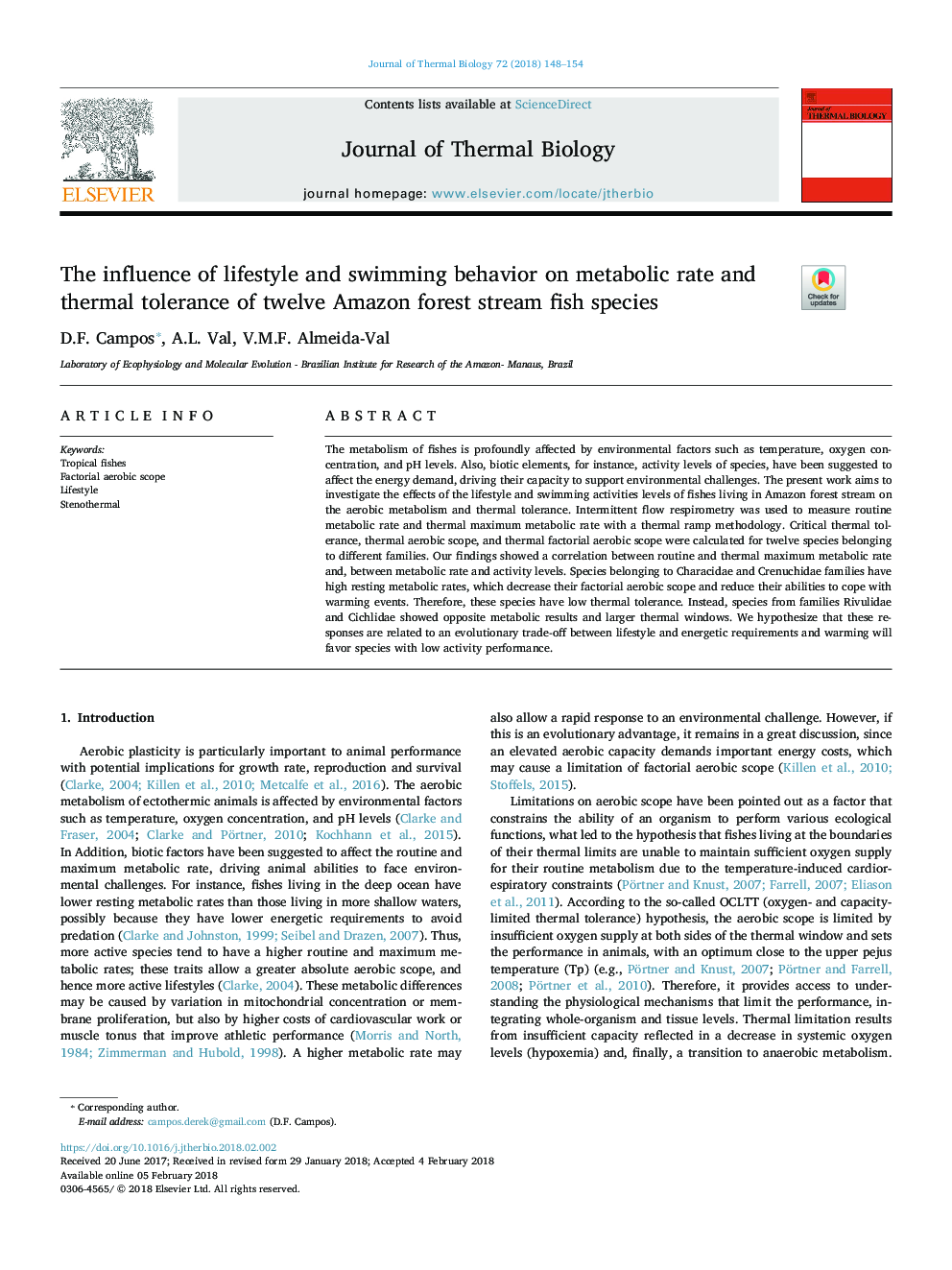| Article ID | Journal | Published Year | Pages | File Type |
|---|---|---|---|---|
| 8650112 | Journal of Thermal Biology | 2018 | 7 Pages |
Abstract
The metabolism of fishes is profoundly affected by environmental factors such as temperature, oxygen concentration, and pH levels. Also, biotic elements, for instance, activity levels of species, have been suggested to affect the energy demand, driving their capacity to support environmental challenges. The present work aims to investigate the effects of the lifestyle and swimming activities levels of fishes living in Amazon forest stream on the aerobic metabolism and thermal tolerance. Intermittent flow respirometry was used to measure routine metabolic rate and thermal maximum metabolic rate with a thermal ramp methodology. Critical thermal tolerance, thermal aerobic scope, and thermal factorial aerobic scope were calculated for twelve species belonging to different families. Our findings showed a correlation between routine and thermal maximum metabolic rate and, between metabolic rate and activity levels. Species belonging to Characidae and Crenuchidae families have high resting metabolic rates, which decrease their factorial aerobic scope and reduce their abilities to cope with warming events. Therefore, these species have low thermal tolerance. Instead, species from families Rivulidae and Cichlidae showed opposite metabolic results and larger thermal windows. We hypothesize that these responses are related to an evolutionary trade-off between lifestyle and energetic requirements and warming will favor species with low activity performance.
Keywords
Related Topics
Life Sciences
Agricultural and Biological Sciences
Agricultural and Biological Sciences (General)
Authors
D.F. Campos, A.L. Val, V.M.F. Almeida-Val,
